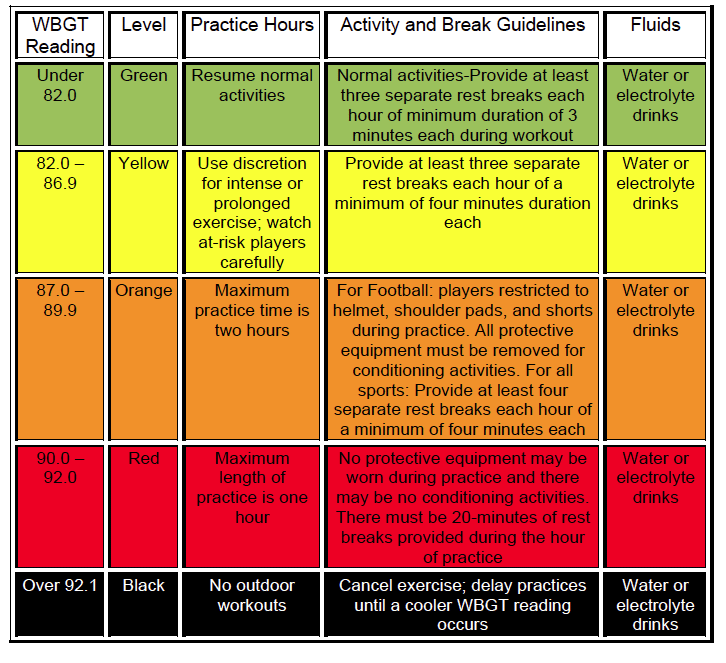
Understanding Wet Bulb Temperature and Its Dangerous Implications
I saw Wet Bulb temperature used in a science fiction short film and decided to investigate further because we tend to say “It’s not the heat, it’s the humidity” a lot. Well, how exactly?
Climate change has brought about numerous environmental challenges, including the rising temperatures around the world. One significant metric used to measure heat stress is the Wet Bulb Temperature (WBT).
Wet Bulb Temperature is a measure of the combined effects of temperature and humidity, indicating how efficiently the human body can cool itself through evaporative cooling. Originally, it was measured using a thermometer with its bulb wrapped in a wet cloth, which is then exposed to the air. The rate at which the water evaporates from the cloth cools the thermometer, and the temperature reading obtained is the Wet Bulb Temperature.
When the Wet Bulb Temperature reaches high levels, it signifies extreme heat and humidity, posing severe threats to human health and well-being. Here’s why it becomes dangerous:
1. Reduced Evaporative Cooling: The body cools itself by sweating, and the evaporation of sweat from the skin helps dissipate heat. However, as the Wet Bulb Temperature rises, the air becomes saturated with moisture, hindering the evaporation process. This impairs the body’s ability to cool down, leading to heat stress and potential heat-related illnesses.
2. Heat Stroke and Heat Exhaustion: When the body is unable to cool itself effectively, heat stroke and heat exhaustion become significant risks. Heat stroke occurs when the body’s core temperature rises to dangerous levels, resulting in organ failure, confusion, and even death. Heat exhaustion manifests as fatigue, dizziness, nausea, and muscle cramps, often preceding heat stroke if not addressed promptly. I cover prevention and first aid for this in my survival books. Also, in a free slideshow.
3. Impacts on Respiratory System: High Wet Bulb Temperatures can also worsen respiratory conditions, as the body’s ability to regulate internal temperature becomes compromised. This is particularly concerning for individuals with pre-existing respiratory ailments such as asthma, bronchitis, or other chronic conditions.
4. Threats to Vulnerable Populations: Elderly individuals, children, pregnant women, and those with underlying health conditions are more susceptible to the impacts of high Wet Bulb Temperatures. Their bodies may have difficulty adapting to extreme heat and are more prone to heat-related illnesses, making them particularly vulnerable.
In recent years, there have been alarming reports of areas around the world experiencing Wet Bulb Temperatures close to or exceeding the limits of human survivability. Such conditions are highly concerning as they indicate a potential for uninhabitable regions, mass migrations, and social and economic instability.
We often hear of the heat index instead of wet bulb, but they are different.
1. Heat Index: The heat index, also known as the “apparent temperature,” is a measure of how hot it feels to the human body when relative humidity is factored in with the air temperature. It takes into account the combined effects of temperature and moisture on our perception of heat. The heat index is typically higher than the actual air temperature on hot and humid days. It helps in assessing the risk of heat-related illnesses and determining appropriate precautions or warnings for the general public.
2. Wet Bulb: The wet bulb temperature, on the other hand, is a measure of the lowest temperature that can be reached through evaporative cooling under current atmospheric conditions. It is determined by wrapping a wet cloth around the bulb of a thermometer and measuring the temperature decrease caused by evaporation. The wet bulb temperature is primarily used to evaluate the potential for evaporative cooling, which affects how effectively the human body can cool down through perspiration. It is particularly significant in assessing heat stress in outdoor or occupational settings.
While the heat index focuses on the perceived temperature by considering the combined effects of temperature and humidity, the wet bulb temperature primarily addresses the cooling potential through evaporation. Both measures are useful in assessing heat-related risks and determining appropriate safety measures, but they provide distinct information about the atmospheric conditions. Thus, I pay more attention to the wet bulb temperature.
Apple has a free app for this, Zelus WBGT.
I go into hot weather preparation and first aid in The Green Beret Preparation and Survival Guide and the first aid in The Green Beret Pocket-Sized Survival Guide.
What disaster you may face, would you like me to cover next?

Recent Comments